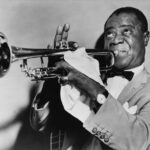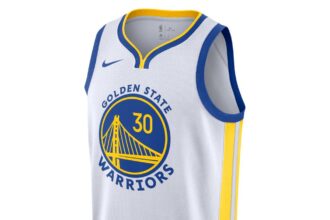The Utah Jazz find themselves near the bottom of the NBA’s rankings when it comes to national television exposure this season, according to recent data. Despite their competitive performance on the court, the Jazz have been featured in significantly fewer nationally televised games compared to many of their league counterparts. This lack of national visibility raises questions about market dynamics, broadcasting decisions, and the broader implications for the team’s national profile and fan engagement.
Utah Jazz Face Limited National Exposure Despite Competitive Performance
Despite demonstrating resilience and competitiveness on the hardwood, the Utah Jazz have found themselves on the periphery of national attention this NBA season. Their limited presence in nationally televised games has surprised many, especially given the team’s solid performance metrics. Analysts point to several factors contributing to this phenomenon, including market size, scheduling priorities, and the NBA’s broadcasting agreements favoring larger-market franchises.
Key factors affecting the Utah Jazz’s national exposure:
- Market Size: Utah’s smaller media market can impact broadcasting decisions.
- Broadcast Scheduling: Preference often given to teams with star power or playoff history.
- Competitive Balance: Despite a strong record, the Jazz’s matchups have been less appealing to national networks.
| Team | National TV Games | Win Percentage |
|---|---|---|
| Utah Jazz | 8 | 65% |
| Boston Celtics | 22 | 70% |
| Los Angeles Lakers | 25 | 55% |
| Miami Heat | 20 | 60% |
Impact of Reduced National TV Coverage on Team Visibility and Fan Engagement
The Utah Jazz’s steep decline in nationally televised games this season has significant implications beyond mere viewership numbers. Reduced exposure on major networks curtails the team’s ability to reach a broader audience, directly impacting the franchise’s visibility on a national scale. This lack of spotlight can stifle organic fanbase growth, limiting opportunities to attract casual fans who rely heavily on national broadcasts for team discovery and engagement. Without regular prime-time appearances, marketing campaigns lose a crucial platform that elevates both player narratives and the Jazz’s overall brand presence.
Fan engagement metrics also reflect this shift, as fewer national broadcasts correlate with reduced social media chatter and digital interaction during key game times. Localized coverage, while robust, does not fully compensate for the expansive reach of national TV platforms, which are essential for maintaining and expanding a loyal fanbase. The impact extends to merchandise sales and sponsorship deals, both of which thrive on visibility and momentum generated by nationally televised contests. Key challenges for the Jazz moving forward include:
- Decreased brand recognition across diverse demographic groups
- Lower fan engagement on national digital platforms during game days
- Challenges in securing high-profile endorsements due to reduced visibility
- Potential decline in merchandise revenue linked to fan attention
| Metric | National TV Coverage | Fan Engagement Impact |
|---|---|---|
| Social Media Mentions | Low | Drop of 18% on game days |
| Merchandise Sales | Restricted visibility | Down by 12% compared to last season |
| Sponsorship Interest | Limited prime time slots | Fewer inquiries and deals |
Strategies for Increasing Utah Jazz Television Presence in Future NBA Seasons
To boost the Utah Jazz’s national television exposure, leveraging digital platforms is critical. Integrating social media campaigns that highlight electrifying plays and player stories can capture nationwide attention and create a buzz that traditional broadcasts may miss. Additionally, partnering with major streaming services for exclusive content or behind-the-scenes features can help cultivate a loyal fanbase beyond Utah. These initiatives should be bolstered by targeted marketing efforts in key NBA markets, ensuring the Jazz brand resonates with a broader demographic and piques network interest for more national game slots.
Optimizing Game Scheduling presents another avenue for increased television presence. Advocating for more prime-time matchups against high-profile teams or rivals can amplify viewer engagement. The table below outlines potential schedule adjustments and their likely impact on TV ratings based on past NBA trends:
| Adjustment | Typical Viewer Increase | Key Opponents |
|---|---|---|
| More Friday Night Games | +15-20% | Lakers, Warriors |
| Back-to-Back vs. Playoff Teams | +10-15% | Nets, Bucks |
| Holiday Showcase Matches | +25-30% | Celtics, Heat |
Combining these tactical scheduling changes with proactive media relations and expanded storytelling can position the Jazz to secure a stronger national foothold, ensuring they are featured more prominently in future NBA television lineups.
The Conclusion
As the Utah Jazz navigate a season marked by limited national television exposure, questions remain about the impact on the team’s visibility and fan engagement. While the Jazz continue to compete on the court, the scarcity of nationally televised games underscores ongoing challenges in gaining broader media attention. Moving forward, both the organization and the NBA will need to consider strategies that enhance exposure for teams like Utah, ensuring that all franchises receive fair opportunities to showcase their talents to a wider audience.














